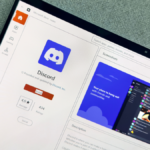Nintendo Switch 2: A Comprehensive Overview of the Latest Console
Nintendo has officially commenced preorders for the Switch 2, though locating a retailer with stock might pose a challenge. As the launch date of June 5 approaches, it’s an excellent opportunity to reflect on the evolution of the Switch series, which has now been on the market for over eight years. With the introduction of the latest model, a comparison between the existing generations may be beneficial, especially for current Switch owners contemplating an upgrade.
During the Switch era, Nintendo revealed a trio of consoles: the original Switch, the Switch OLED, and the Switch Lite. This article will examine their specifications alongside the new Switch 2. Although full reviews are necessary for a subjective experience comparison, an analytical overview of their specifications is helpful.
Dimensions
The distinctions in feel and size among Nintendo’s consoles are immediately apparent. The Switch 2 stands as the largest, measuring 4.5 inches in height, 10.7 inches in width, and 0.55 inches in thickness, with the new Joy-Con 2 controllers attached. Notably, the thickness from the joystick tips to the ZL/ZR buttons measures 1.2 inches. When weighed, it registers at 0.88 lbs alone or 1.18 lbs with Joy-Cons.
The original Switch is smaller, with dimensions of 4 inches by 9.4 inches by 0.55 inches and a joystick thickness of 1.12 inches. Its weight is slightly lighter at 0.66 lbs without Joy-Cons and 0.88 lbs with them. Intriguingly, the weight of the Switch 2 matches that of the original Switch equipped with Joy-Cons.
In comparison, the Switch OLED has a footprint similar to the original, measuring 4 inches by 9.5 inches by 0.55 inches, again with identical joystick dimensions. It strikes a balance in weight at 0.71 lbs without Joy-Cons and 0.93 lbs with.
Finally, the Switch Lite stands as the most compact option, measuring 3.6 inches by 8.2 inches by 0.55 inches, with the joystick thickness remaining unchanged at 1.12 inches, and weighing in at 0.61 lbs.
Display
The Switch 2 boasts the most expansive screen in Nintendo’s history, featuring a 7.9-inch LCD display with a sharp resolution of 1920 x 1080. This model supports HDR10 and offers a variable refresh rate (VRR) of up to 120Hz.
The original Switch, while also equipped with an LCD, has a smaller 6.2-inch display with a resolution of 1280 x 720. It does not feature HDR support and operates at a refresh rate capped at 60Hz. The Switch Lite mirrors this smaller screen size with a 5.5-inch LCD, given its focus on portability.
Turning to the Switch OLED, it offers an OLED screen that supports individually controlled pixels, allowing for superior black levels compared to an LCD. However, its display measures 7 inches, making it slightly smaller than the Switch 2, and lacks HDR support, maintaining the original 720p resolution.
Video Output and Dock
Nintendo restricts resolution in handheld mode, likely for battery conservation. However, once docked, capabilities expand.
The Switch 2 supports a maximum resolution of 4K (3840 x 2160) at 60 frames per second when connected to a television. For enhanced frame rates of 120 fps (if the game allows), a resolution of 1440p or 1080p is necessary.
Both the original Switch and Switch OLED can output at 1080p when docked. Conversely, the Switch Lite is designed solely for handheld play and lacks video output features.
The dock for the Switch 2 resembles that of the OLED model, albeit slightly larger, and includes the same dual USB 2.0 ports along with a LAN port. Unlike the original Switch dock, which lacks a LAN port and has an additional USB 2.0 port, the Switch 2 dock incorporates an active cooling fan, facilitating performance during intense gaming sessions.
Joy-Cons
The detachable controllers—known as “Joy-Cons”—remain an iconic feature of the Nintendo Switch experience.
The new Joy-Con 2 models are 4.57 inches tall, 0.56 inches wide, and 1.2 inches thick, with the left model weighing 2.3 ounces and the right at 2.4 ounces, due in part to the right Joy-Con’s new “C-Button” for the GameChat feature.
While specific specifications for the original Joy-Cons appear inaccurate on Nintendo’s website, verified dimensions indicate they are 4.02 inches by 1.41 inches by 1.12 inches, with weights of 1.73 ounces for the left and 1.84 ounces for the right.
All Joy-Cons provide HD Rumble feedback, but Joy-Con 2s enhance this with HD Rumble 2, and introduce “Mouse Mode,” allowing Joy-Cons to function akin to a computer mouse on flat surfaces.
The connection mechanism for Joy-Con 2 has also evolved; instead of sliding onto rails like the originals, they now engage magnetically, with robust magnets ensuring a secure fit. Controllers detach via buttons located on their backs.
Each Joy-Con model utilizes Bluetooth 3.0, supports NFC, and offers similar battery life: a full charge in approximately three and a half hours, delivering up to 20 hours of gameplay on a single charge.
Battery
Interestingly, the Switch 2 does not boast improvements in battery longevity compared to its predecessors, despite housing the largest battery at 5220mAh. Users can expect between 2 to 6.5 hours of playtime, although Nintendo notes that actual performance will depend on the games in use.
The original Switch and Switch OLED feature a 4310mAh battery, delivering between 4.5 to 9 hours of usage. The Switch Lite, with a 3570mAh battery, performs slightly better, ranging from 3 to 7 hours. This variance is understandable, as the enhanced power of the Switch 2 requires greater energy consumption, especially for high-performance games.
All versions charge to full in approximately three hours while in sleep mode.
Storage and Communications
The games available for Switch 2 are anticipated to be more substantial than any prior Nintendo titles, necessitating more internal storage—256GB to be precise.
In contrast, the original Switch and Switch Lite come with only 32GB of built-in storage, while the OLED variant offers 64GB. If extra space is required, all models support storage expansion via microSDHC or microSDXC cards. The Switch 2, specifically, accepts MicroSD Express cards, limiting compatibility options.
The Switch 2 also advances from Wi-Fi 5 on the original models to Wi-Fi 6. While the original Switches support Bluetooth 4.1, the Switch 2’s Bluetooth capability remains unspecified—likely a newer standard given its later release. Additionally, the Switch 2 includes a second USB-C port on its top, enabling charging while the kickstand is deployed.
Audio and Video Chat
For the first time, a Nintendo console incorporates camera support. The Switch 2 permits webcam usage for GameChat, allowing real-time interaction with friends during gameplay. While Nintendo offers its own camera, third-party alternatives are also compatible.
A built-in microphone facilitates voice chat, enabling communication with friends through GameChat, regardless of whether a camera is in use. However, challenges may arise regarding audio clarity if the console and TV are distanced.
Additionally, the Switch 2 features “3D Audio,” promising an immersive auditory experience where sounds originate from their sources in the game, enhancing spatial awareness during gameplay.
Games
The library of titles remains the cornerstone of any gaming console. The Switch 2 will see its own exclusive releases, although the initial offerings may be fewer than anticipated.
Among the standout upcoming titles exclusive to the Switch 2 are Mario Kart World, Donkey Kong Bananza, Drag X Drive, Hyrule Warriors: Age of Imprisonment, Kirby Air Riders, and Elden Ring: Tarnished Edition. Furthermore, upgraded versions of classic Nintendo titles will be available, including enhanced graphics for both Zelda games, Breath of the Wild and Tears of the Kingdom, alongside others like Super Mario Party Jamboree + Jamboree TV and Metroid Prime 4 Beyond.
Those subscribed to Nintendo Switch Online can also access GameCube classics, including The Legend of Zelda: The Wind Waker, Soulcalibur II, and F-Zero GX, with additional titles confirmed for future release.
Games for the Switch 2 can be obtained in both physical and digital formats. However, certain physical titles may not include the game itself, operating instead with a “game-key card” that permits internet downloads for play. This design differs from the original Switch’s game distribution method.
While Switch 2 can play original Switch games, this isn’t a true backward compatibility experience; the Switch 2 employs emulation for original titles, and performance may vary. It may be wise to retain the original console if compatibility with older games is a significant factor.
Kickstand
Each new Switch iteration brings enhancements to the kickstand design. The original featured a small, thin stand prone to breakage, while the OLED version introduced a much improved, wider stand with multiple angle settings. The Switch 2 offers even greater flexibility, catering to a variety of viewing preferences—an evolution worth acknowledging.
Price
Fortunately, the Switch 2 avoided price hikes due to tariffs: it is available for $449.99, or $499.99 bundled with Mario Kart World, a deal likely to be appealing given the standalone game retails for $79.99. While not all Switch 2 titles are priced at $80, with Donkey Kong Bananza at $69.99, it’s clear Nintendo has stepped away from the universal $60 pricing structure.
The original Switch maintains a retail price of $299.99, whereas the Switch OLED is priced at $349.99. Initially retailing at $199.99, the Switch Lite is often found at discounted rates.












